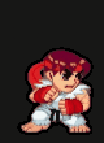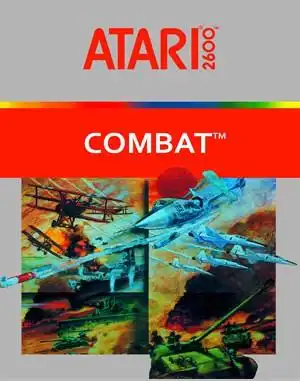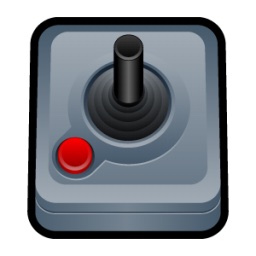Remember the thrill of hooking up your first Atari 2600? For millions, that initial journey into the pixelated world of home video games began with a single cartridge: Combat Atari 2600. More than just a game, it was the quintessential pack-in title, the first taste of interactive entertainment for an entire generation of retro gaming enthusiasts.
Bundled with the legendary Atari 2600 console from 1977 until 1982, Combat wasn't just a bonus; it was the system's handshake, introducing players to the magic of the VCS (Video Computer System), later known as the Atari 2600. It wasn't the most graphically advanced game even for its time, but its simple, immediate multiplayer action created countless hours of competitive fun right out of the box.
Let's take a nostalgic dive into what made this game an absolute classic.
The Game That Started It All
When the Atari VCS launched in 1977, it needed a flagship experience to showcase its capabilities, simple as they were. Drawing inspiration from Atari's own popular 1974 arcade game Tank, Combat delivered just that. Programmed to fit within a tiny 2-kilobyte ROM cartridge, it was a technical marvel for its era, designed primarily as a test for the new hardware.
Its inclusion as the default pack-in game meant that virtually every early Atari 2600 owner had a copy. This widespread availability cemented its status as a foundational title, the game you played with friends and family the moment the console was plugged in.
Simple Fun, Endless Variety
Despite its basic appearance, Combat offered surprising depth through its numerous game variations. You weren't just playing one game; you were getting 27 different experiences on a single cartridge!
The game modes fell into three main categories:
- Tank: Top-down view where players control tanks. Variations included open fields, obstacle courses, invisible tanks, and the famous "Tank-Pong" where missiles ricocheted off walls.
- Biplane: Side-scrolling aerial combat. Players control biplanes, navigating clouds and trying to shoot each other down.
- Jet: Top-down aerial combat. Faster-paced than biplanes, with continuous forward movement and optional clouds.
Each mode had options for one or two players, difficulty settings affecting missile speed and range, and scoring goals. The goal was simple: outmaneuver your opponent and score hits within a timed round. This focus on direct, head-to-head competition made it perfect for spontaneous multiplayer sessions.
The controls were straightforward – the iconic Atari joystick for movement and the single red button to fire. This accessibility meant anyone could pick up and play within seconds, a hallmark of classic Atari design.
Behind the Pixels
The development of Combat is a fascinating peek into the early days of game programming. Started by Steve Mayer and Ron Milner and finished by Larry Wagner, the game had to be squeezed into that tiny 2KB cartridge. This constraint forced ingenuity, leading to the varied gameplay modes that reused core mechanics but felt distinct. It was coded primarily in assembly language, a painstaking process that highlights the skill required to create games on such limited hardware.
While the graphics were simple blocky sprites, the sound effects – the distinct "pew" of missiles, the explosion sound – are instantly recognizable and deeply nostalgic for anyone who played it.
A Timeless Classic?
Contemporary reviews of Combat were mixed. By the early 1980s, as games became more complex, some critics found it outdated. However, retrospective reviews often praise its replayability and fundamental fun, particularly in two-player mode. Its simple "cat-and-mouse" action, especially in variations like Tank-Pong, holds up surprisingly well.
For many, Combat isn't judged by modern graphical standards but by the sheer joy and competitive spirit it fostered. It's a game remembered fondly for launching the home console experience.
Playing Combat Today
Don't have an old Atari 2600 hooked up? No problem! You can still experience the pixelated battles of Combat:
- Modern Compilations: Combat is frequently included in official Atari game collections available on platforms like Steam, Xbox, PlayStation, and Nintendo Switch, as well as dedicated retro consoles like the Atari Flashback series or the Atari Gamestation Pro.
- Emulation: Emulators like Stella allow you to play Atari 2600 ROMs on your computer. (Remember to check the legal status of ROMs in your region).
- Online Archives: Websites like the Internet Archive (archive.org) host playable versions of many classic Atari games in browsers, often alongside scans of original manuals.
Experiencing Combat again, whether through emulation or a modern compilation, instantly transports you back to a simpler time in gaming.
Legacy and Beyond
Combat's success even led to plans for a sequel, Combat Two, in 1982. While never officially released during the 2600's commercial peak, an incomplete prototype surfaced years later and has since been included in modern collections, offering a glimpse into how the concept might have evolved with landscapes and more complex gameplay.
But it's the original Combat Atari 2600 that remains the icon. It wasn't the most complex, the prettiest, or the most famous game ever made, but as the game that came with the console, it holds a special place in the history of video games and the hearts of retro gamers everywhere. It was the starting line for millions, proving that simple, competitive fun could ignite a revolution.
FAQ
Q: Was Combat included with every Atari 2600? A: Combat was bundled with most Atari 2600 consoles from its launch in 1977 until 1982, making it the most common pack-in game.
Q: How many different games are on the Combat cartridge? A: The Combat cartridge features 27 different game variations across Tank, Biplane, and Jet modes, offering diverse gameplay experiences.
Q: Can I play Combat on modern consoles or computers? A: Yes, Combat is available on many modern Atari game compilations for PC and consoles, and can also be played using Atari 2600 emulators.
Q: What was Tank-Pong? A: Tank-Pong was a popular variation of the Tank mode in Combat where the missiles fired by the tanks would ricochet off the walls, adding a strategic, billiard-like element to the gameplay.


